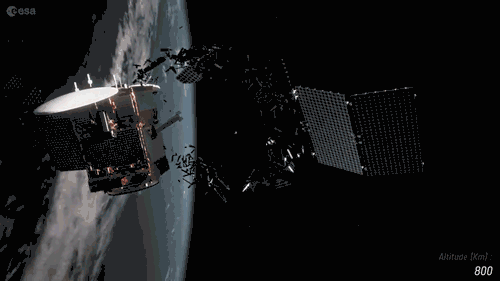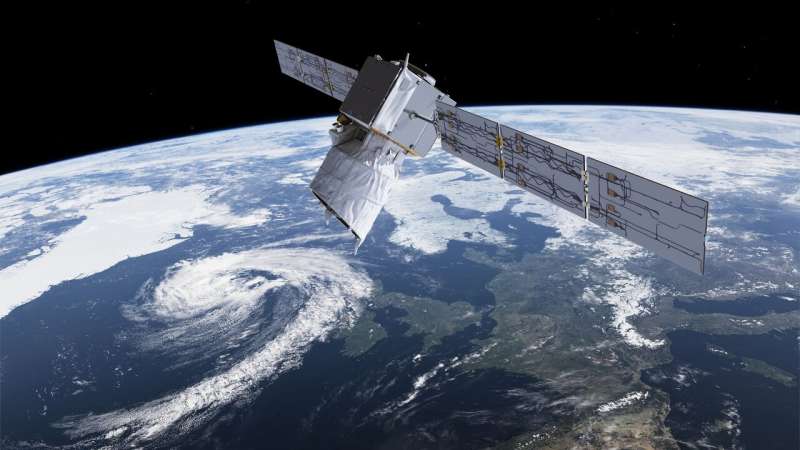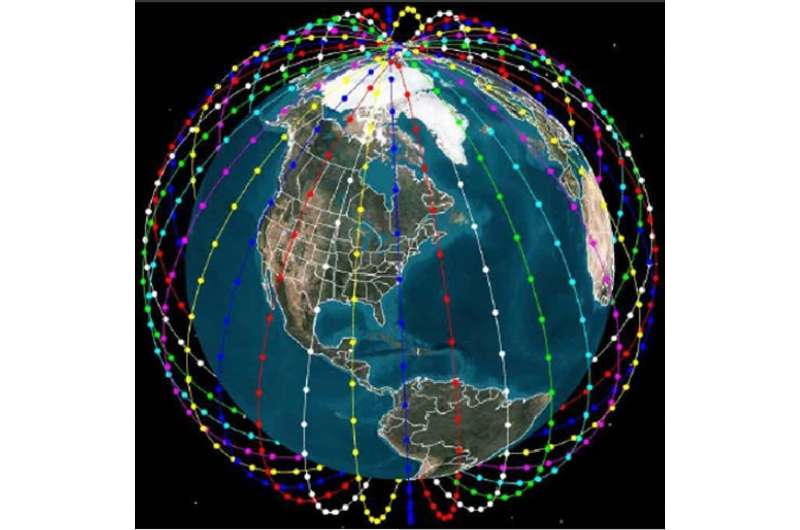Automating collision avoidance

ESA is preparing to use machine learning to protect satellites from the very real and growing danger of space debris.
The agency is developing a collision avoidance system that will automatically assess the risk and likelihood of in-space collisions, improve the decision making process on whether or not a maneuver is needed, and may even send the orders to at-risk satellites to get out of the way.
Such automated decisions could even take place on board satellites, which would directly inform other operators on the ground and satellites in orbit of their intentions. This will be essential to ensuring that automated decisions do not interfere with the maneuver plans of others.
As these intelligent systems gather more data and experience, they will get better and better at predicting how risky situations evolve, meaning errors in decision making would fall as well as the cost of operations.
"There is an urgent need for proper space traffic management, with clear communication protocols and more automation" says Holger Krag, Head of Space Safety at ESA.
"This is how air traffic control has worked for many decades, and now space operators need to get together to define automated maneuver coordination."
Flying a space mission isn't what it used to be. We are now faced with the remnants of past orbital endeavors that still today haunt Earth's environment.
After roughly 5450 launches since the beginning of the space age in 1957, the number of debris objects estimated to be in orbit, as of January 2019, was:
- 34,000 objects larger than 10cm in size
- 900 000 objects between 1cm to 10cm
- 128 million objects from 1mm to 10cm
"Manual' collision avoidance
Because of this debris environment, it is now routine for operators in highly-trafficked orbits to spend time protecting their spacecraft from potentially catastrophic collisions with space junk, by performing "collision avoidance maneuvers"—basically sending the commands to their spacecraft to get out of the way.
Such maneuvers depend on validated, accurate and timely space surveillance data, provided for example by the US Space Surveillance Network, serving as the basis of "conjunction data messages," or CDMs, warning of possible close encounter between their spacecraft and another satellite or space object.

For a typical satellite in low-Earth orbit, hundreds of alerts are issued every week. For most, the risk of collision decreases as the week goes by and more orbital information is gathered, but for some the risk is deemed high enough that further action is required.
For ESA's current fleet of spacecraft in these low altitude orbits, about two alerts per week, per satellite, require detailed follow-up from by an analyst. This involves hours of analysis of the distance between the two objects, their likely positions in the future, uncertainties in observations and therefore in calculations and ultimately the probability of collision.
If the probability is greater than typically one in 10,000, the work of various teams is needed to prepare a collision avoidance maneuver and upload the commands to the satellite.
The maneuver must be verified to ensure it will have the expected effect, and doesn't for example bring the spacecraft closer to the object or even in harm's way of another object.
On average, ESA needs to perform more than one collision avoidance maneuver per satellite per year, the vast majority due to space debris.
Although such maneuvers ultimately protect spacecraft, they also disrupt their normal schedule, delaying or interrupting scientific observations or communications, and often use up scarce fuel, decreasing the lifetime of the mission.

NewSpace
As the number of small, privately owned satellites in orbit is drastically increasing, the era of "NewSpace' has begun.
Many satellites will work on their own but thousands have been announced that will launch in large constellations—huge networks of satellites flying together in relatively low orbits—aiming to provide global, close-range coverage, whether for telecommunications or Earth observation.
Some companies have started to launch such large constellations into low-Earth orbit, in order to provide regular internet access to regions without the necessary infrastructure. Other companies such as Amazon and Boeing have announced similar plans.
This means we will soon have more active satellites in orbit than have been launched before in the history of spaceflight.
Such constellations, while bringing great benefits to people on Earth, will be a source of huge disruption to the long term sustainability of the space environment, if we do not change the way we operate.
As the space highways above Earth get busier and close approaches become more common, the current manual process of calculating collision risks and determining how spacecraft should respond will be far too slow and time consuming to be effective.
Provided by European Space Agency





















